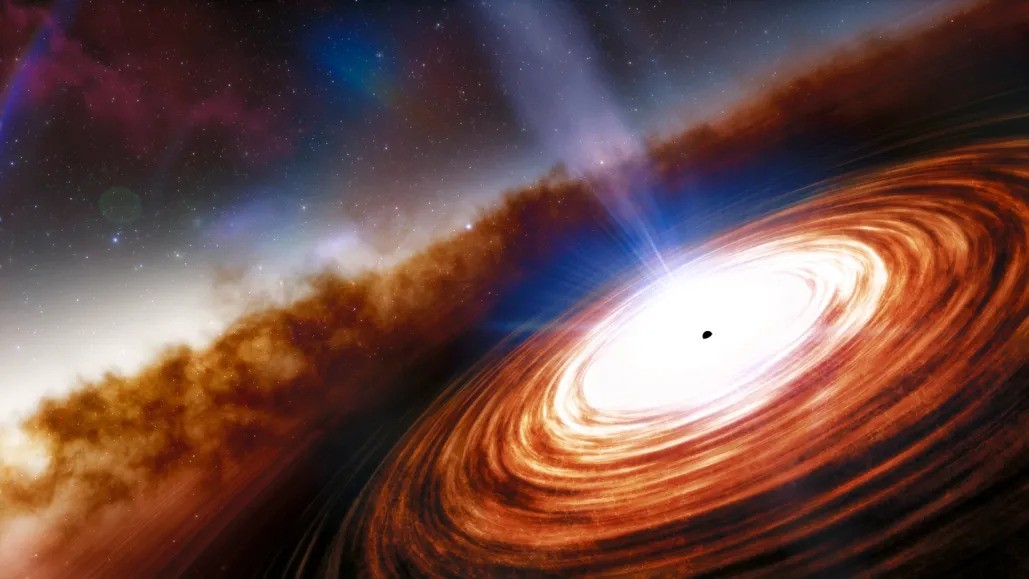When a supermassive black hole absorbs matter, so much energy is released that it can be seen from billions of light-years away. Recently, scientists working with the Gaia Space Telescope have created the largest map of these objects.

New map of the Universe
Astronomers have mapped the largest volume of the universe in history with a new survey of active supermassive black holes hiding in the centers of galaxies. Although these objects themselves are virtually invisible, those that absorb gas are called quasars, ironically, they are among the brightest objects in the universe.
The new map captures the location of about 1.3 million quasars in space and time, the most distant of which shone brightly even when the universe was only 1.5 billion years old (for comparison, the universe is now 13.7 billion years old).
“This quasar catalog is different from all previous catalogs in that it gives us a three-dimensional map of the largest-ever volume of the universe,” says co-author David Hogg, senior researcher at the Flatiron Institute’s Center for Computational Astrophysics in New York and professor of physics and data science at New York University. “It isn’t the catalog with the most quasars, and it isn’t the catalog with the best-quality measurements of quasars, but it is the catalog with the largest total volume of the universe mapped.”
Quasars and galaxies
Quasars are powered by supermassive black holes in the centers of galaxies and can be hundreds of times brighter than their own star systems. When the gravitational pull of a black hole swirls nearby gas, this process generates an extremely bright disk, and sometimes jets of light that can be observed using telescopes.
In addition, galaxies are usually surrounded by a massive halo of dark matter. It is also invisible by itself, but it can bend light due to the effect of a gravitational lens.
Astronomers can also use the location of distant quasars and their host galaxies to better understand how the cosmos has expanded over time. For example, scientists have already compared the new map of quasars with the oldest light in the universe — the cosmic microwave background. As this light moves towards us, it is bent by a web of dark matter — the web mapped out by the quasars. By comparing them, scientists can measure how dense it is.
How can the new map help us?
The team used data from the third Gaia data release, which contained 6.6 million quasar candidates, as well as data from NASA’s Wide-Field Infrared Telescope Infrared Survey Explorer and the Sloan Digital Sky Survey.
The team has also created a map that shows where dust, stars and other obstacles can prevent us from seeing certain quasars, which is crucial for interpreting the map of supermassive black holes.
“This quasar catalog is a great example of how productive astronomical projects are,” says Hogg. “Gaia was designed to measure stars in our own galaxy, but it also found millions of quasars at the same time, which give us a map of the entire universe.”
According to phys.org
Follow us on Twitter to get the most interesting space news in time
https://twitter.comne/ust_magazine


